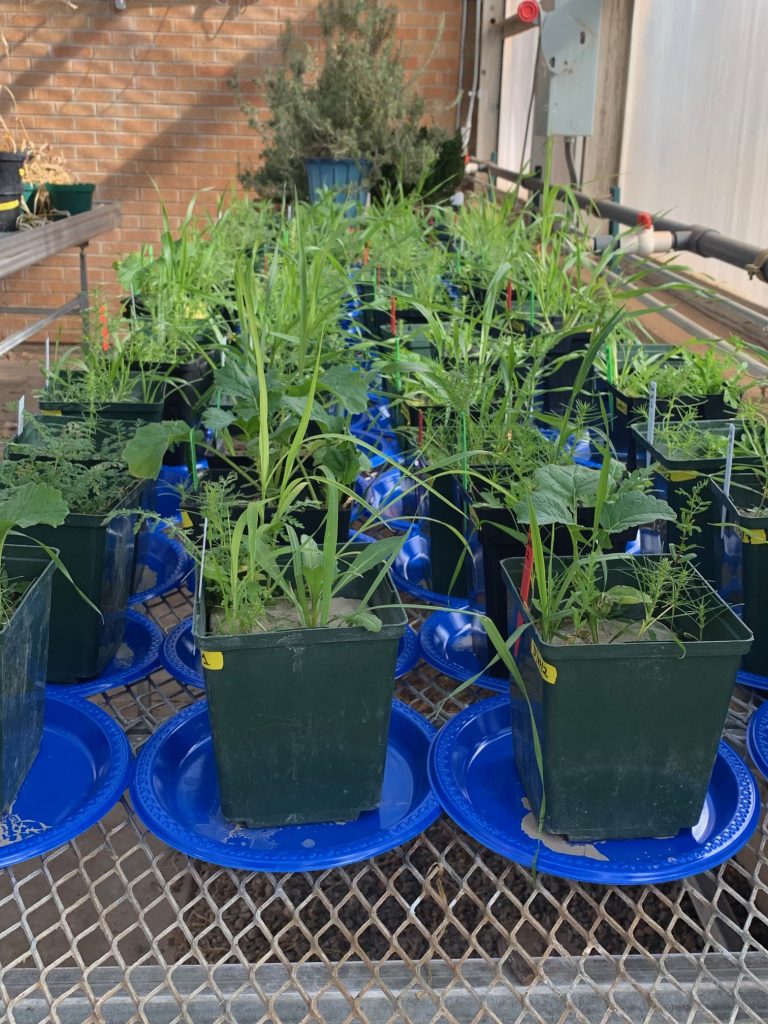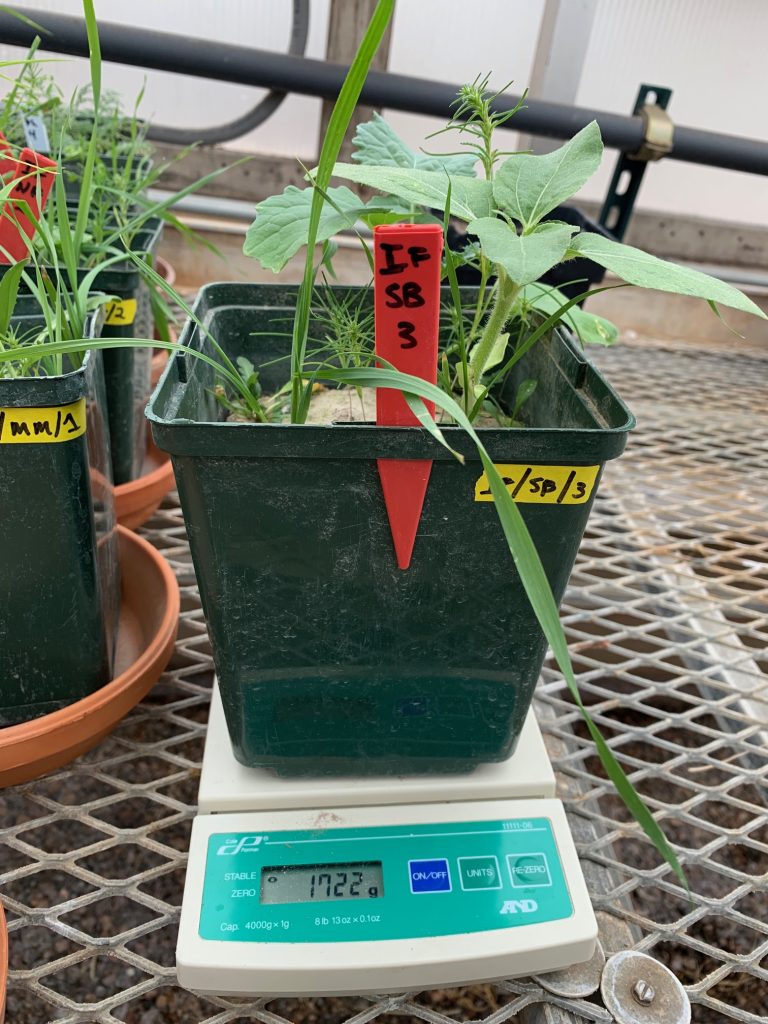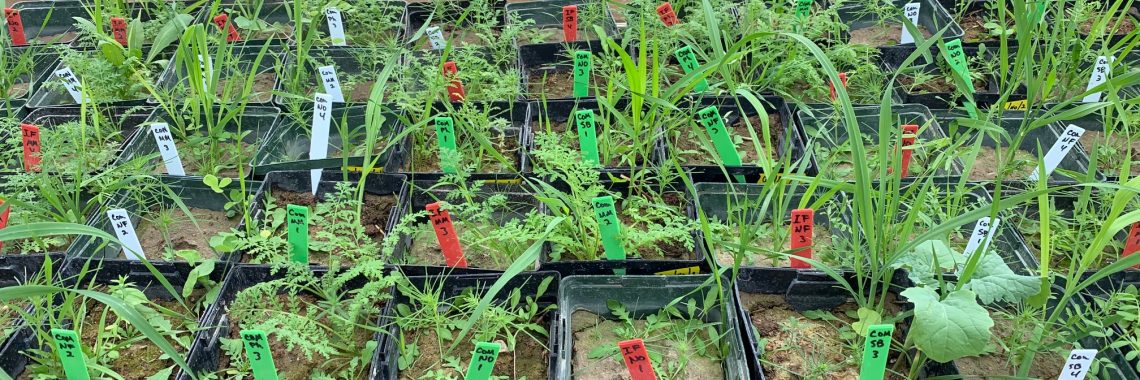Here in Wyoming, we live in a dry, windy, and sometimes unpredictable environment. Summers are typically very warm, with occasional storms, and the winters are cold and dry. For farmers who grow cover crops, the tough environment can complicate things. Successful establishment of cover crops can be difficult without sufficient moisture and nutrients from the environment.
What are cover crops (and why grow them)?
Cover crops grow before or after cash crops. Cover crops can help improve soil quality and add nutrients to the soil that the cash crop could uptake in the future. Plants from the legume family are the prime example for adding nitrogen to the soil, because they have a symbiosis with root bacteria that fixes atmospheric nitrogen into a plant-available form. Another way cover crops improve soil conditions is by adding plant residue into the soil after they are fully grown, increasing organic matter.
Other cover crops can relieve soil compaction, move moisture up higher in the soil, or even reduce weed populations through competition for resources. Cover crops are a popular management method worldwide. In semi-arid regions like Wyoming, one of the main cover crop mixes is field pea and oat mix. Researchers Elizabeth Moore and Urszula Norton from the Department of Plant Sciences at the University of Wyoming were interested in how different cover crops interact with nutrients from different soil amendments in low-moisture environments.
About the experiment
Moore and Norton’s research was conducted over a nine-week period, chosen to mimic the short window of time that cover crops have to grow and establish in a growing season.
The experiment was done in a greenhouse to ensure consistent soil moisture. Field-collected soil from a dryland farming area in southeastern Wyoming was either amended with compost, amended with an inorganic fertilizer, or left as a soil-only control. These pots were planted with different cover crop mixes, each with a different management goal correlating to the kind of cover crop mix. The different kinds of cover crop mixes were a phacelia monoculture, a soil-building mix, a nitrogen-fixing mix, a mycorrhizal mix, and a no cover crop control. All pots were watered equally, but kept at a very low percent moisture to mimic the semi-arid growing conditions of Wyoming.


Findings
The soil-building mix, nitrogen-fixing mix, and mycorrhizal mix all had high cover crop biomass, which is good if cover crops will be grazed or harvested, as well as for providing ground cover and increasing soil organic matter. All cover crop mixes reduced the amount of weed biomass as well. The soil-building mix outperformed the other cover crop mixes with the most plant biomass, and the least weed biomass. The soil-building mix also had the best biological nitrogen fixation with no added soil amendments and good biological nitrogen fixation in soils with a compost amendment.
In general, the highest levels of biological nitrogen fixation occurred in soils with no amendment added or compost added, in contrast to the least biological nitrogen fixation when inorganic fertilizer was added. When inorganic fertilizer was present, the legumes used the nitrogen from the fertilizer rather than making it on their own.
Moore concluded that having a “heavy hitter” with a couple of other species is more beneficial than having a mix with too many different species within it. Based on this study, a general recommendation for cover crop mixtures would be to find one or two high-impact cover crop species and mix in a couple of other species with different root types. In particular, Moore recommends plant diversity in a cover crop mix be achieved through mixing a single species from a variety of plant families (grass, legume, mustard, and other broadleaves) rather than multiple species from a single plant family.
Moore and Norton recently published their findings in the open-access scientific journal PLOS ONE. The article, titled “Improving semi-arid agroecosystem services with cover crop mixes,” can be viewed here.





